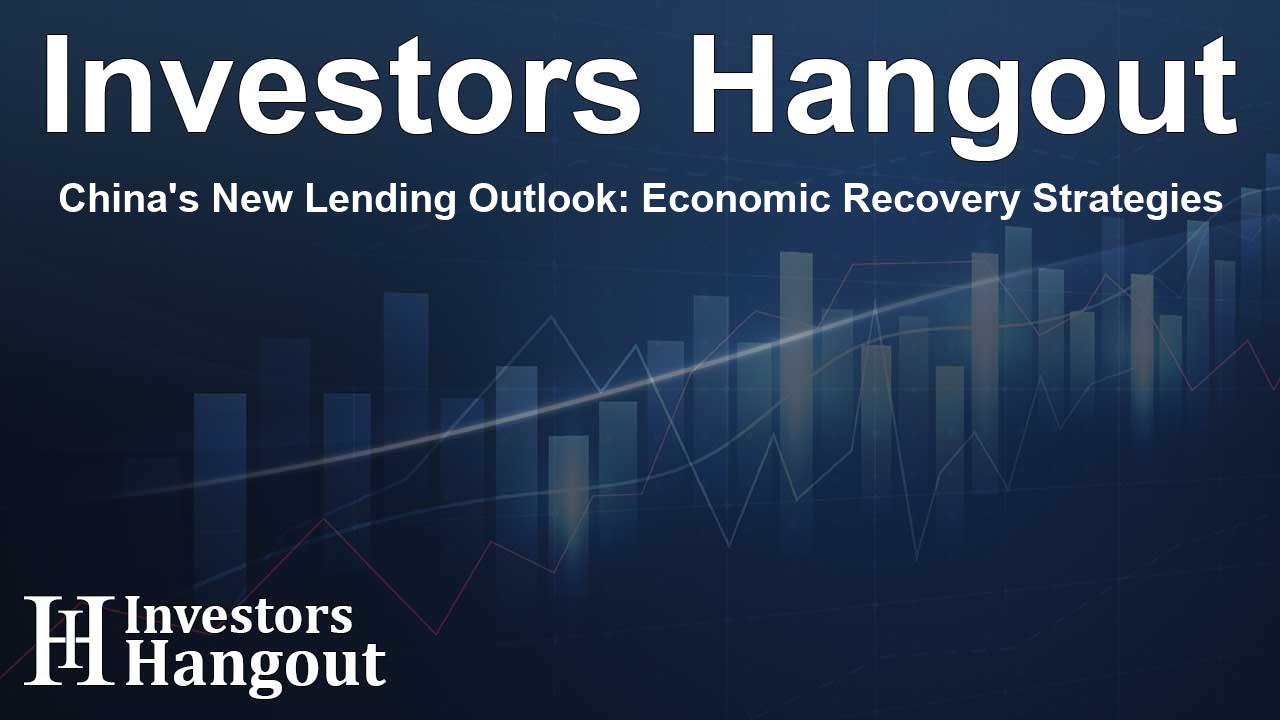China's New Lending Outlook: Economic Recovery Strategies

China's Recent New Lending Trends
In recent updates, it's clear that new bank lending in China has increased significantly, yet it still fell short of expectations as analysts predicted a more robust performance. After the dismal numbers recorded in July, which represented a 15-year low, data released indicates that Chinese banks extended approximately 900 billion yuan (around $126.86 billion) in new loans during August. This marks a substantial increase from July's figures but did not meet the anticipated targets.
Understanding the Lending Data
The People's Bank of China released figures demonstrating that new yuan loans reached 14.43 trillion yuan for the first eight months of the year. While the increase of 246% from July's loans seems promising, it still fell flat when compared to analyst expectations of 1.02 trillion yuan for August. Just a year ago, the lending numbers were even higher at 1.36 trillion yuan, illustrating the challenges currently faced in the financial landscape.
Composition of New Loans
A closer look at the distribution reveals that household loans, which include mortgages, experienced a modest recovery, expanding by 190 billion yuan in August. This shows a positive shift after July's contraction of 210 billion yuan. Corporate loans also showed signs of improvement, rising to 840 billion yuan from 130 billion yuan in the previous month. These increases in both sectors suggest a cautious return to lending practices despite the overall slower economic pace.
Future Policy Measures
In light of the ongoing challenges, a senior official from the People's Bank of China emphasized the bank's commitment to maintaining a supportive monetary policy. Observers widely expect that further easing measures will be enacted, including potential reductions in the reserve requirement ratio (RRR). This reduction would allow banks to unlock more capital for lending, thereby stimulating economic growth.
Rate Adjustments and Economic Goals
Analysts from global brokerage firms forecast a modest cut in the central bank's main policy rate alongside a reduction in the RRR by 25 basis points. President Xi Jinping's recent remarks highlight the urgency for authorities to fulfill the nation’s economic and social development objectives, as there is increasing pressure for effective recovery solutions.
The Broader Economic Outlook
The fallout from a slowing economy has led many international brokerages to revise their growth predictions for China’s economy downwards, now suggesting growth may not meet the official government target of around 5% for the year. With the broad M2 money supply showing a year-over-year increase of 6.3%, however, it seems there is still some momentum in the economy. The total outstanding loans also reflect a modest annual growth of 8.5% in August, though this is a slight dip compared to previous months.
Trends in Total Social Financing
Furthermore, the annual growth of outstanding total social financing (TSF)—a crucial indicator encompassing various financing methods—has shown a decrease from 8.2% in July to 8.1% in August. This slowing trend signals a careful watch in the lending environment, particularly as TSF witnessed a significant leap to 3.03 trillion yuan from just 770 billion yuan in July, exceeding analysts' expectations.
Concluding Thoughts
As China navigates these economic uncertainties, the ongoing adjustments made by the People’s Bank of China will be pivotal in determining the country's financial stability and recovery trajectory. Understanding these lending dynamics will be crucial for both domestic and international observers as they assess the future landscape of the Chinese economy.
Frequently Asked Questions
What is the current lending situation in China?
In August, new bank lending in China rose to 900 billion yuan, a 246% increase from July, but still fell short of analyst expectations of 1.02 trillion yuan.
How is the People's Bank of China responding?
The PBOC is expected to implement more supportive policies, including potential interest rate cuts and reductions in reserve requirements to encourage lending.
What impact has the economic slowdown had on lending?
The recent economic downturn has prompted a general scaling back of lending activity, affecting both household and corporate loans.
What is total social financing (TSF)?
TSF is a comprehensive measure of credit available in the economy, including conventional bank loans and alternative financing like bond sales and trust loans.
What can we expect from China's economic policies moving forward?
Expectations are that policy measures will be adjusted further to support economic growth amidst challenges, including potential interest rate reductions and enhanced lending flexibility.
About The Author
Contact Evelyn Baker privately here. Or send an email with ATTN: Evelyn Baker as the subject to contact@investorshangout.com.
About Investors Hangout
Investors Hangout is a leading online stock forum for financial discussion and learning, offering a wide range of free tools and resources. It draws in traders of all levels, who exchange market knowledge, investigate trading tactics, and keep an eye on industry developments in real time. Featuring financial articles, stock message boards, quotes, charts, company profiles, and live news updates. Through cooperative learning and a wealth of informational resources, it helps users from novices creating their first portfolios to experts honing their techniques. Join Investors Hangout today: https://investorshangout.com/
The content of this article is based on factual, publicly available information and does not represent legal, financial, or investment advice. Investors Hangout does not offer financial advice, and the author is not a licensed financial advisor. Consult a qualified advisor before making any financial or investment decisions based on this article. This article should not be considered advice to purchase, sell, or hold any securities or other investments. If any of the material provided here is inaccurate, please contact us for corrections.
